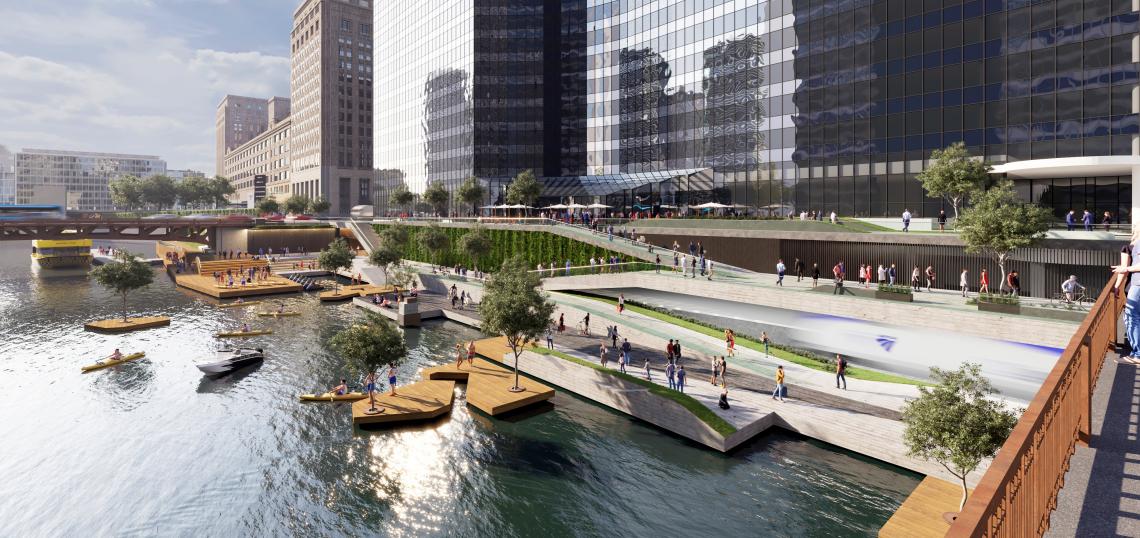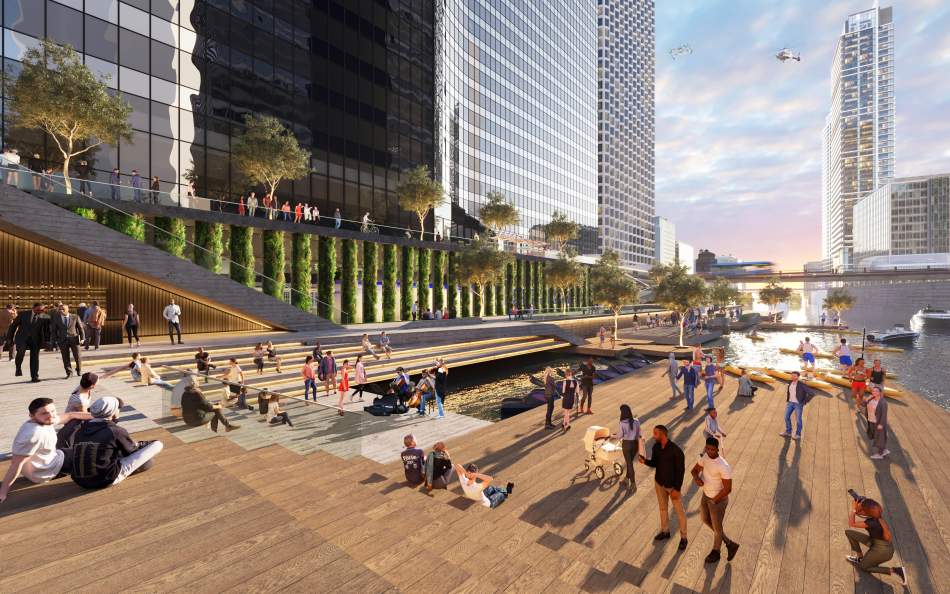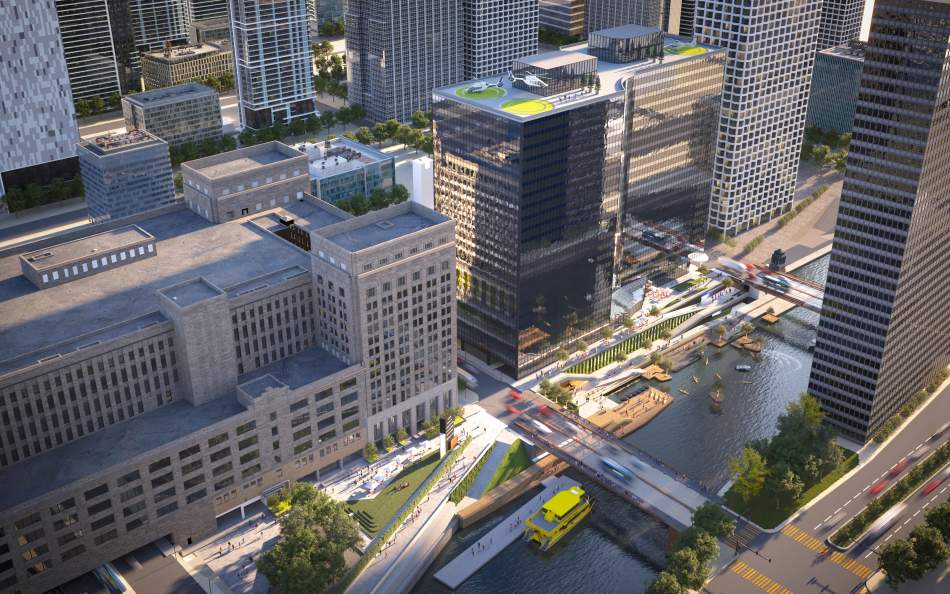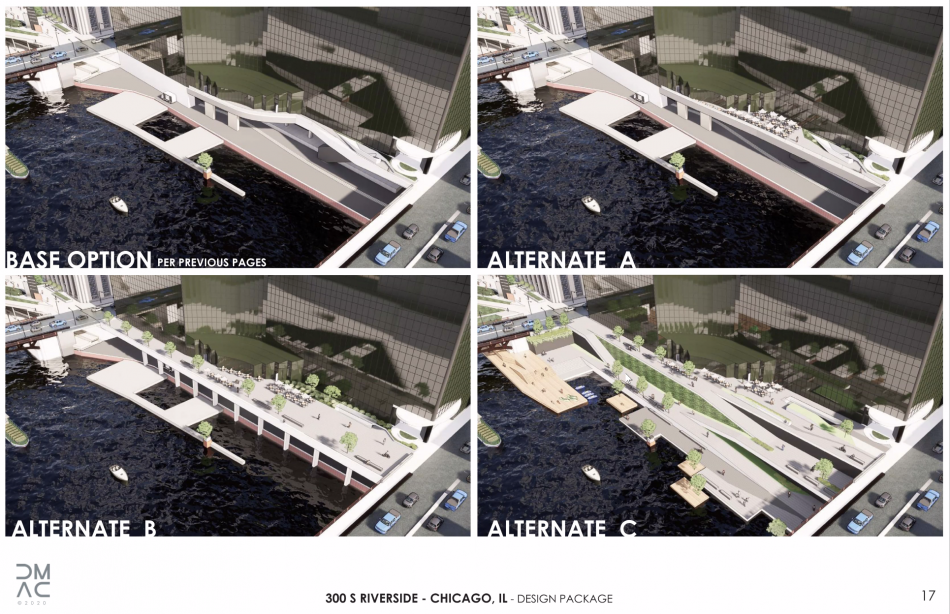Chicago-area design firm DMAC Architecture has revealed an ambitious vision for bringing new open space and a riverwalk to the south branch of the Chicago River.
Located just east of the office building at 300 S. Riverside Plaza, the concept was created in response to Amtrak's concept to reactivate an unused platform near Union Station and add egress stairs to street level. DMAC, working with property owner Third Millennium Group, saw the situation as a chance to create something special.
"We felt there is a solution for egress that can be satisfied in a much better way," DMAC founder and principal Dwayne MacEwen told Urbanize. "You can't make this the 'back door' to Union Station. It should be the front door to the city and river. Chicago exists where it does because of the river. To not embrace it seemed like a missed opportunity."
The concept treats the need for new stairs as a starting point to extend a perimeter walkway around 300 S. Riverside and potentially down to the waterfront with a series of ramps. The upper terrace is envisioned as an outdoor dining area, while the lower levels serve as public gathering spaces and piers that could be used by kayakers, tour boats, and floating "tree taxi" islands.
The walkways would allow train passengers to emerge from Union Station at river level, while an acoustic "veil" and baffle in front of the platforms would help absorb sound. A proposed pedestrian connection would pass beneath the Van Buren Street Bridge and provide access to the redeveloped Old Post Office property.
The landscaping takes inspiration from the location's existing features, which include wild vegetation growing on remnants of the sea caves—a series of sunken waterfront tunnels leftover when engineers reversed the flow of the Chicago River in 1900. The concept also takes advantage of intermodal connectivity at the site, which is served by trains, buses, boats, bicycles, and even helipads on the roof of 300 S. Riverside.
Described by Third Millennium Group managing director Adam Mizrachi as a "love letter to Chicago," the so-called Riverwalk@300SRP plan is still very much in the concept phase. Its designers hope renderings of the project can start a conversation about how to make it a reality.
"This is a 'love letter,' so we're not at the altar yet," said MacEwen. "Developers often look at a project from the standpoint of how it impacts the bottom line, but this is something that the city should want to do."
"It's ambitious, we know," added the architect. "But there's also a sense that if phase one is adding the egress stairs from the train platform, let's do it in a way that still allows [the riverwalk] to happen later."
Amtrak spokesperson Marc Magliari confirmed that have been discussions about activating the unused tracks under the Old Post Office as passenger platforms serving Union Station, but challenges remain and no decision has been made.
"These tracks were designed to connect to the Old Post Office and not Union Station, so riders would have to cross active tracks to get to them," Magliari told Urbanize. "We have to find a way to solve the issues of getting people from the station to the platform in a safe and accessible way."
Magliari also noted that nearby developments such as Bank of America Tower, Southbank, and The 78 already provide riverwalks on the opposite bank of the river. "There's the question of where the city intends to build a continuous riverwalk for the south branch," Magliari said.
This post has been updated with additional information from Amtrak.









